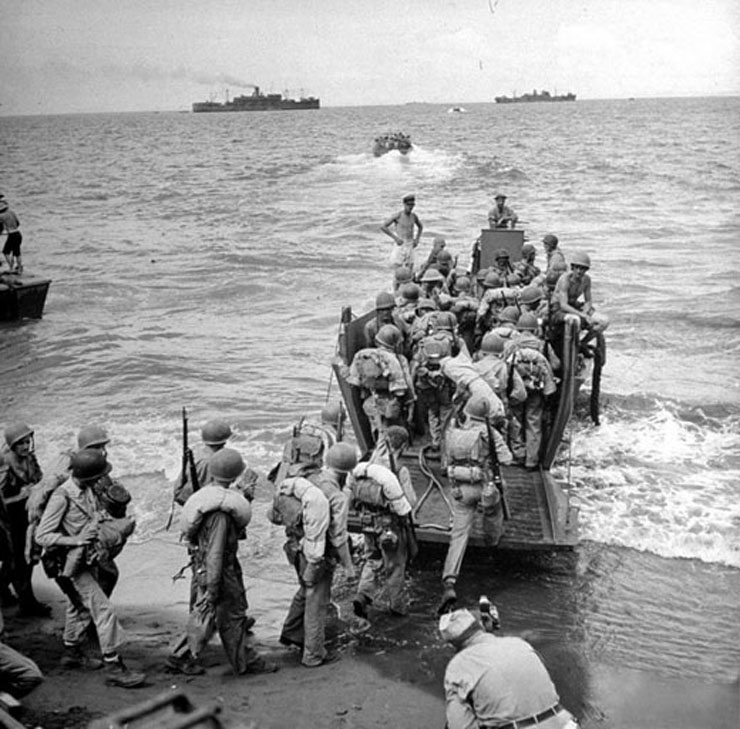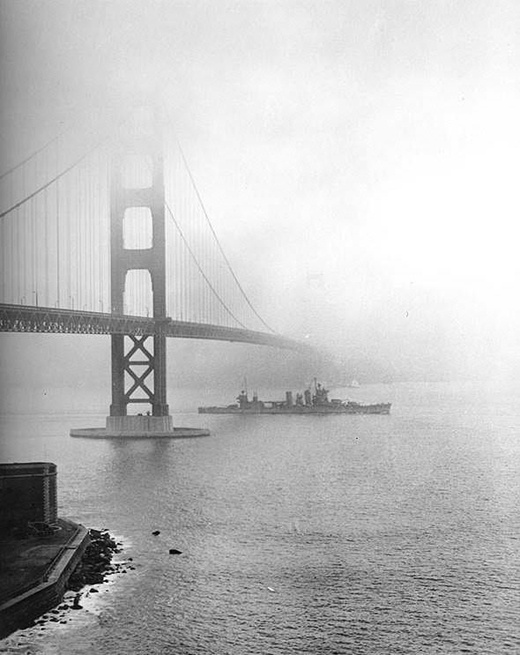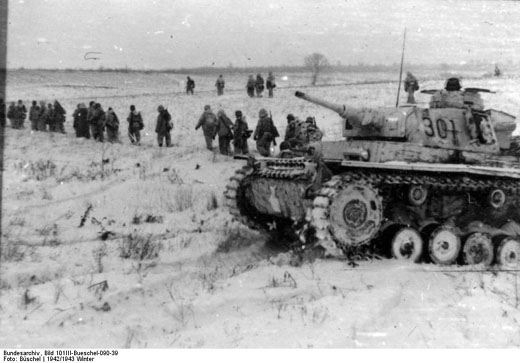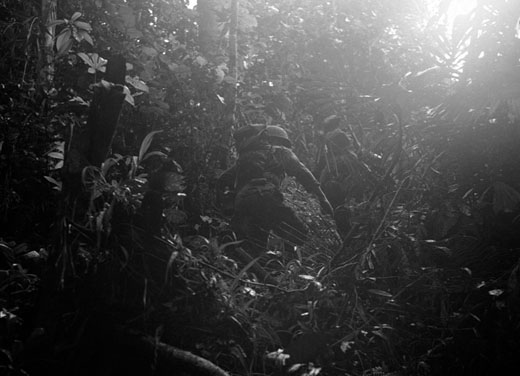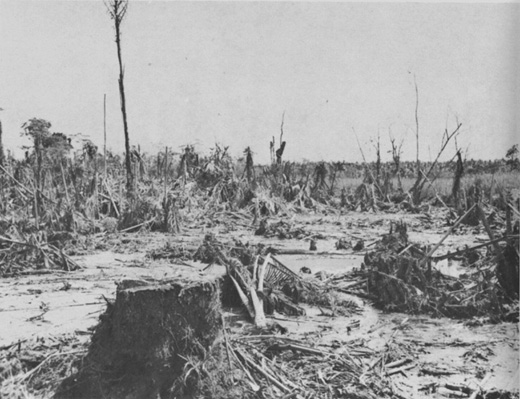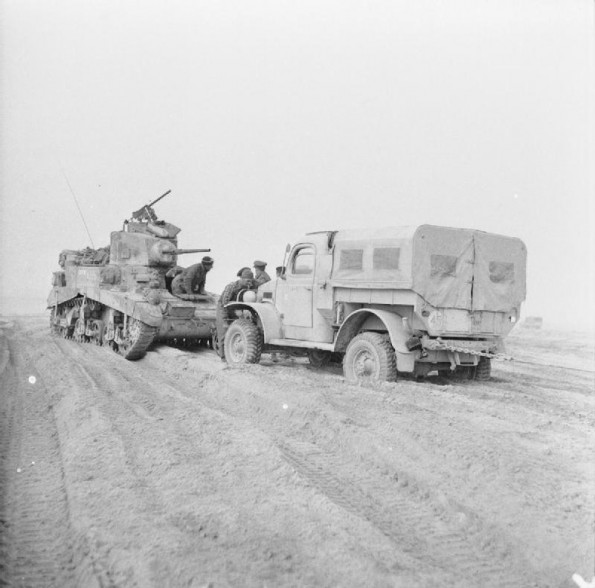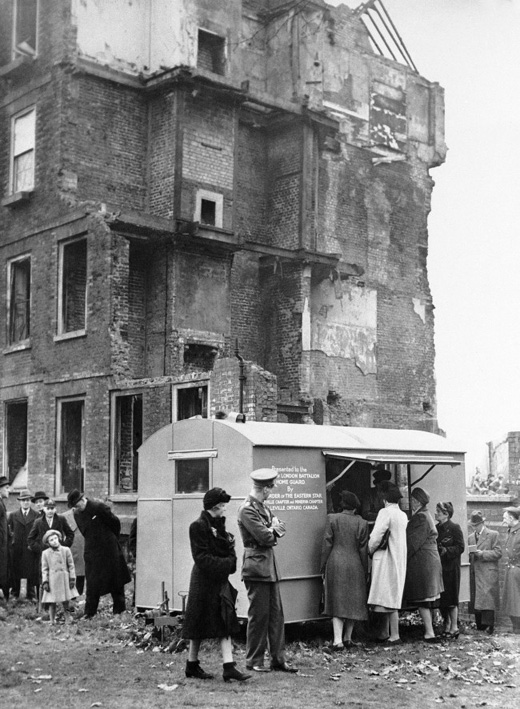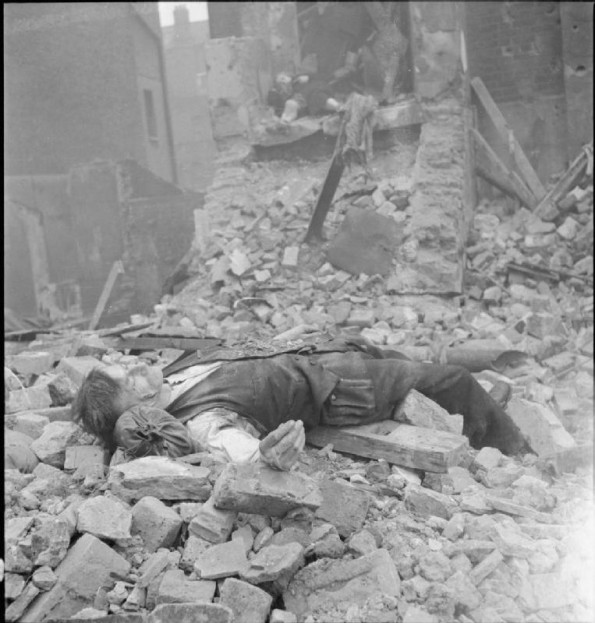Air Operations, New Guinea
V Bomber Command B-25s, B-26s, and A-20s, and V Fighter Command P-400s mount an all-out effort against Buna in support of a renewed Allied ground attack that fails to secure the objective. An Australian Army brigade,however, takes Gona.
[Air Operations, Tunisia
- A regular pattern of air attacks is opened by 12th Air Force against the Tunis/El Aouina Airdrome. In the first attack, before 0900 hours, 6 A-20s and 13 B-17 attack the base followed closely by 9 A-20s and 6 RAF Bristol Bisley light bombers. An estimated 30 aircraft are destroyed on the ground and a 14th Fighter Group pilot downs a Bf-109 in the air over the airdrome. During the afternoon, an attack by 12 B-26s destroys and estimated 15 Luftwaffe aircraft on the grouns.
- XII Fighter Command P-38s attack German Army tanks near Djedeida.
Allied Command
Responsibility for the India-China air lift is transferred from Gen Stilwell to Air Transport Command, based in India.
[Battle of the Atlantic
The British anti-submarine trawler Jasper (581t), escorting Convoy PW-256, is sunk by German motor torpedo boat S-81 in the English Channel with the loss of 10 of her crew.
[Britain, Home Front
The House of Commons receives the Report on Social Insurance and Allied Services prepared by the Beveridge Committee. The report proposes far-reaching measures of social reform which are designed to eliminate poverty in Britain. The laws which will emerge from the consideration of the report are the foundation of Britain's modern welfare system. The Report is a bestseller as 635,000 copies are sold.
In London, Sydney Silverman, MP, reports that more than 2,000,000 Jews have been exterminated by the Nazis up to the end of September.
[Burma
After a period of rest and re-equipping the Japanese man a line Tengchung-Myitkyina-Kamaing-Kalewa-Akyab.
[Diplomatic Relations
Ethiopia declares war on Germany, Italy and Japan.
[Eastern Front
CENTRAL SECTORThe 20th Army continues its futile attacks for five days, failing entirely to break the now solid German defenses between Osuga and Sychevka. To the west the battle for Belyi is equally unsuccessful, the Germans driving the salient back with heavy losses. At the end of four days' fierce fighting, the 41st Army has been contained, having pushed a ten-mile salient into the German lines. To the north the 22nd Army is similarly beaten, being contained by German counterattacks.
[Guadalcanal
The 8th Marines, 2nd Marine Division, is withdrawn from forward positions west of the Matanikau River, leaving Americal Division units to hold the west sector.
Tanaka is back at Shortland. 3 more destroyers are assigned to supply duty: Arashi, Nowaki, and Yugure.
[Mediterranean
Axis supply problems are well illustrated by events during the next two days. There are 4 Italian convoys at sea which are threatened by a British squadron, Q Force, of 3 cruisers and 2 destroyers. 3 of the convoys are recalled. The 4 freighters and 1 of the escorts of the 4th convoy are sunk and 2 more escorts damaged. The British later lose 1 destroyer, the Quentin, to an air attack. During December the Italians will try to convoy over 200,000 tons of cargo to Tunis and Tripoli, but of this 90,000 tons, in 32 ships, will be lost to British and Allied naval and air attacks.
[New Guinea
The Australian 21st Brigade, after turning back 3 barge loads of Japanese soldiers attempting to reinforce Gona, attacks and captures Gona, forcing the Japanese back to Gona Mission for a final stand.
The Japanese press very vigorously on the roadblock set up on the Soputa-Sanananda track by units of the US 32nd Division, repelling American counterattacks. Urbana Force makes another futile attempt to reach Buna Village after artillery and mortar preparation with all available weapons. Warren Force continues attacks toward Cape Endaiadere on the right and New Strip on the left with little success. The 1st Battalion of the 126th Infantry gets elements to the northeast edge of New Strip.
[North Africa
ALGERIAAdm Darlan
In an attempt to forestall the impending Allied attack, there is a strong German counterattack near Tebourba a little west of Djedeïda. The Allies manage to repel it after taking heavy casualties and are forced to withdraw. Combat Command B, US 1st Armored Division, attached to the British 78th Division, is to hold the Germans in the Tebourba area. Concentration of the 78th Division, the first full division of the V Corps, British 1st Army, on the Tunisian front, is now complete. Axis aircraft bomb port installations at Bône and Algiers.
German forces in Tunisia are now over 15,000 strong. The buildup is to continue. Two German infantry divisions and most of 10th Panzer Div will arrive soon. The Italians have shipped 90,000 tons of supplies to Tunisia since Operation TORCH began and the German air-transport fleet is also very active. Allied attacks are taking a considerable, and increasing toll of these shipments. The efforts made to strengthen Tunisia also mean that Rommel is forced to make do with a poorer allowance for his troops to the east.
[Pacific
The US submarine Peto (SS-265) sinks the Japanese transport Konei Maru (2345t) north of the Bismarck Archipelago.
[United States, Command
Gen Ira C. Eaker takes over command of the 8th Air Force from Gen Spaatz who takes over the 12th Air Force in North Africa. Many of the supplies which would otherwise have come to 8th Air Force are now being sent to North Africa where 12th Air Force will be established.
[United States, Home Front
Gasoline rationing is introduced throughout the country.
[























